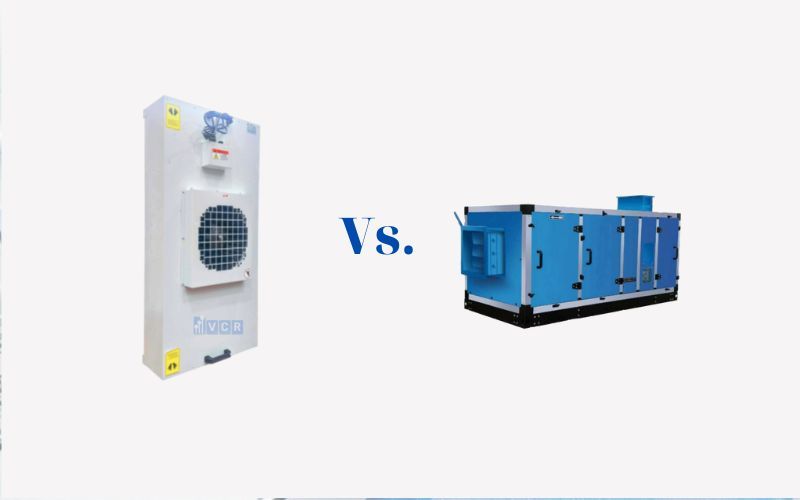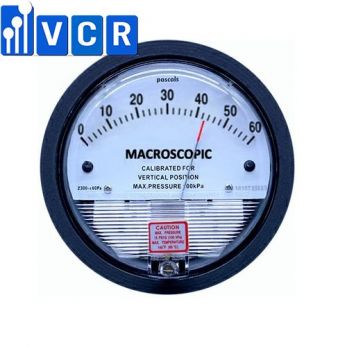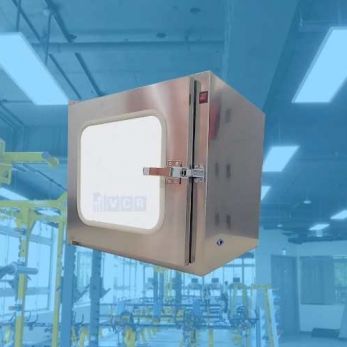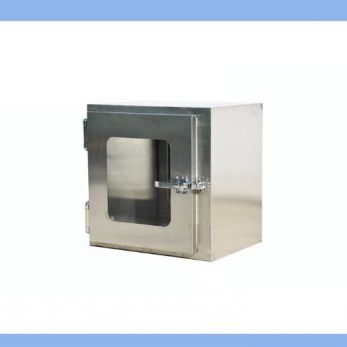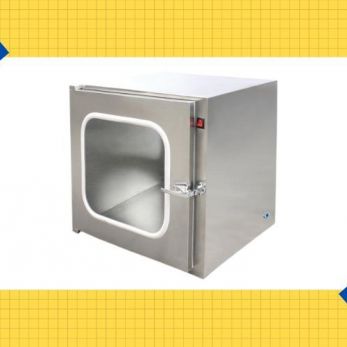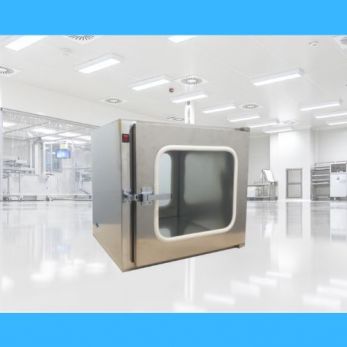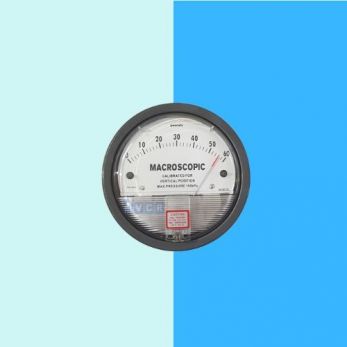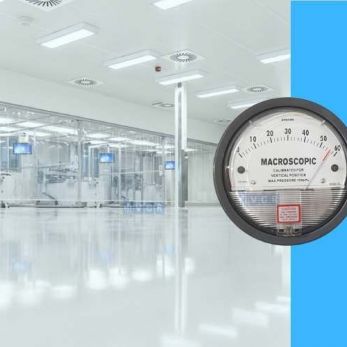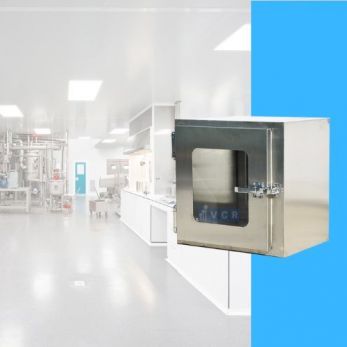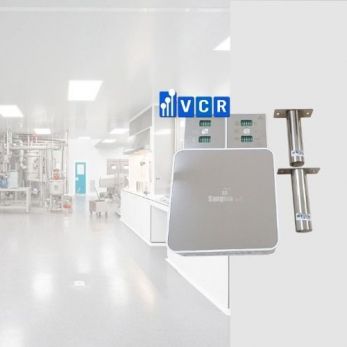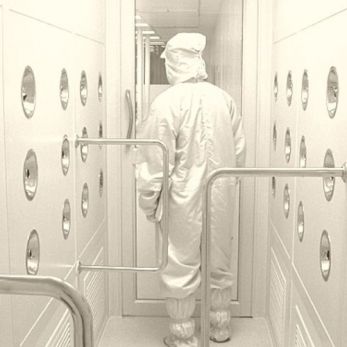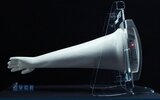The differences between air handling unit (AHU) and fan filter unit (FFU)
When considering air filtration and treatment in cleanroom, people always FAN FILTER UNITS AND AIR HANDLING UNITS: WHAT’S THE DIFFERENCE? FFUs and AHUs are both used to filter and treat air within cleanrooms and controlled environments. The biggest
When considering air filtration and treatment in cleanroom, people always
FAN FILTER UNITS AND AIR HANDLING UNITS: WHAT’S THE DIFFERENCE?
FFUs and AHUs are both used to filter and treat air within cleanrooms and controlled environments. The biggest difference between these systems is their connection with the cleanroom HVAC.
AIR HANDLING UNITS
An air handling unit is synonymous with the HVAC system, and acts as a centralized unit for air processing and filtration. When an air handling unit is solely responsible for delivering clean air to the cleanroom, a filter is placed before the plenum and a fan pushes treated air through the filter and into the room.
AHUs can be simple or complex, depending on the needs of the cleanroom. Simple AHUs consist of the HEPA filter, a heating coil, a cooling coil, and a fan to push air through the unit. More complex AHUs also contain a sound attenuator, return fan, relief air section, humidifier, and intakes for outside air and a discharge plenum.
FAN FILTER UNITS
Fan filter units are installed in the cleanroom and can be added or subtracted as needed to reach air cleanliness standards. They are individual units that each deliver filtered air into the cleanroom. Temperature and relative humidity are still controlled by the HVAC unit, but air enters the cleanroom after it’s been filtered through the separate FFUs.
Fan filter units have a simpler construction that is multiplied across the cleanroom to reach peak effectiveness. They consist of a HEPA filter, pre-filter, and a fan to push air through the unit. The more stringent the cleanroom classification, the more fan filter units required to reach particle count requirements. For example, while an ISO Class 8 cleanroom may only require 5-15% of ceiling coverage dedicated to FFUs, ISO Class 3 cleanrooms may require 100% of the ceiling to be dedicated to these powerful filtration units.
FAN FILTER UNITS AND AIR HANDLING UNITS: PUTTING IT ALL TOGETHER
While one system is not inherently better than the other, fan filter units do offer some advantages when used over just an air handling unit alone.
DRAWBACKS OF RELYING ON AN AIR HANDLING UNIT
AHUs deliver fresh, filtered air directly into the cleanroom. Because the entire system is in-house, all filters, heating, and cooling coils are maintained in one, central location. It may seem like a simpler construction, but using AHUs to manage the treatment and filtration of air for an entire cleanroom requires more energy and becomes more inefficient (and expensive) as your ISO class gets lower.
Disadvantages of Relying on an AHU for Filtration
- Lower Airflow Requires More Power: The entire system pushes air into the cleanroom through one or a few filtered openings, and depending on your cleanroom size and classification, that’s a lot of airflow forced through a limited space. It takes a lot of power to use an AHU to cool and filter air in a cleanroom — especially at lower ISO levels.
- Inefficient Configuration for Low ISO Cleanrooms: As the ISO class gets lower, there’s more reliance on the AHU and filter to provide clean, cool air for the room. When cleanrooms get more complex and house large or sensitive equipment that generates a lot of heat, it can be difficult to manage with just an AHU.
- Vulnerable to Filter Loading: AHUs should be run 24/7 to prevent filter loading, which can occur when particles settle and then are forced through filter media when the system is turned back on. Tears and filter loading can reduce filter performance and be difficult to spot and address.
WHY IMPLEMENT FAN FILTER UNITS IN YOUR CLEANROOM
Many cleanrooms, especially those that must support sensitive processes at a lower ISO level, opt for modular construction with fan filter units installed in a grid ceiling. That’s not to say that an air handling system couldn’t do the job just as well, but the easy installation and maintenance of FFUs makes them a more popular, efficient, and cost-effective choice.
Advantages of Using Fan Filter Units
- Modular and Customizable: Each filter and housing is an independent system that can be mounted in a modular ceiling grid. FFUs are completely customizable in size, flow rate, and filter options. When designing a cleanroom filtration system with FFUs, you can be as specific as you want to meet your classification, project, and budget requirements.
- Thorough and Efficient Cleanroom Filtration: Fan filter units are 99.99% efficient with HEPA filters (or 99.9995% efficient when paired with ULPA filters) making them ideal for a variety of sensitive aerospace applications. They also produce less noise than a large AHU.
- Easy to Modify: Fan filter units are ideal for projects that need room to grow. To meet increased cleanliness requirements, you can simply add more FFUs. With AHUs, this would require a certified contractor to reconfigure the system and run extra conduit.
- Easy to Maintain: FFUs also present an advantage during maintenance. Self-contained units can be accessed and replaced as needed without having to disable the entire system.
To meet high demands of productivity, having a reliable filtration system that can be easily accessed is a must. And, the higher filtering power means that sensitive applications, such as those working with sensors or fine electronics, are protected from the smallest particles with accuracy and consistency.
Source: Angstrom Technology






